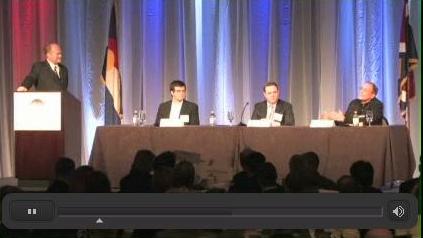San Jose Knows the Way

I travel a lot. Delivering 100+ speeches a year means I am in multiple airports most weeks of the year. This allows me to do an ongoing comparative analysis of airport design: what works, what doesn't work, and what each city thinks travelers want and need. Many airports are just old-fashioned, out of date and only add to the struggle of travel for that group of people commonly called "road warriors." "What were they thinking?" or, in my case, "Why didn't they think?" are the questions that come to mind.
One way to look at this is through the filter of 20th versus 21st century. Airports that were built in the 20th century and have not been redesigned and updated feel like time warps. Think about what has happened to passenger air travel since 2000. The three obvious changes are the dramatic increase in airport security, the increased passenger load of most planes today, and the explosion of electronic devices travelers now carry.
Airports built – or redesigned – since 2000 have integrated the security aspect into the design, creating flow patterns that acknowledge the current reality. Outdated airports still feel makeshift, with lines of people snaking by restaurants and stores. Recently constructed airports often emphasize high ceilings and lots of light, providing the traveler with a respite of bright space after being in crowded and constrained airplane, taxi and train spaces. Older airports have low ceilings, narrow hallways and public space reflective of a time when the skies were much less crowded. The subject of this column though is the abject failure of airports to acknowledge the simple fact that every traveler today travels with one to four electronic devices.
I find it absolutely absurd that in older airports (I will use this time variable rather than speak to the paucity of design thought) people like myself, dressed in suits, have to sit on the linoleum floor of corridors because that is where the electrical outlets are. For years, my modus operandi has been to think like a night floor cleaner to find where the electrical outlets are, only because that is what the airport designers were thinking before the era of ubiquitous electronic gadgets.
Every gate waiting area should have a row of chairs with electrical outlets or a counter with work stations with electrical outlets. It is something the majority of us need but most airports simply don't provide. I do not currently own a Samsung device, but I quietly thank the company every time I see one of its circular charging stands in an airport. A perfect placement of brand to meet personal need! The brand differentiator that I most like about Southwest Airlines is that its terminals have clusters of plug-in work stations. They are almost always crowded, highlighting a simple passenger need left unfulfilled elsewhere.
Just give me a clean, well-lit space with an easy and comfortable way to plug in and work, or at least recharge my batteries, for a long travel day. A way that I don't have to sit on the floor!
I recently flew out of San Jose International Airport, which obviously opened a brand new terminal not long ago. It has high ceilings with a lot of windows and light. Approaching my gate, I started my typical six-inches-off-the-ground visual search for electrical outlets. Then, as I got to my gate, there it was – the holy grail of travel connectivity! There were at least two rows of chairs with arms. In one of the arms of each chair were two electrical outlets and a USB outlet. Eureka! An airport designed for the 21st century traveler. Once again, Silicon Valley leads the way.
I am sure it is a common experience for the traveler coming into San Jose to quietly sing, for at least a few moments, the Burt Bacharach song sung by Dionne Warwick.
Well, when it comes to the electrical needs of today's traveler, San Jose knows the way!
[For additional futurist ruminations on air travel you can click on this video
http://www.davidhoule.com/assets/art/videos/state_of_dia.html ]
David Houle is a futurist, strategist and speaker. He has always been slightly ahead the curve. Houle spent more than 20 years in media and entertainment. Most recently, David is a featured contributor to Oprah.com. Check is out here www.oprah.com/davidhoule. David can be contacted at David@DavidHoule.com.
Read all David’s MediaBizBloggers commentaries at David Houle - MediaBizBloggers.
Check us out on Facebook at MediaBizBloggers.com
Follow our Twitter updates @MediaBizBlogger



